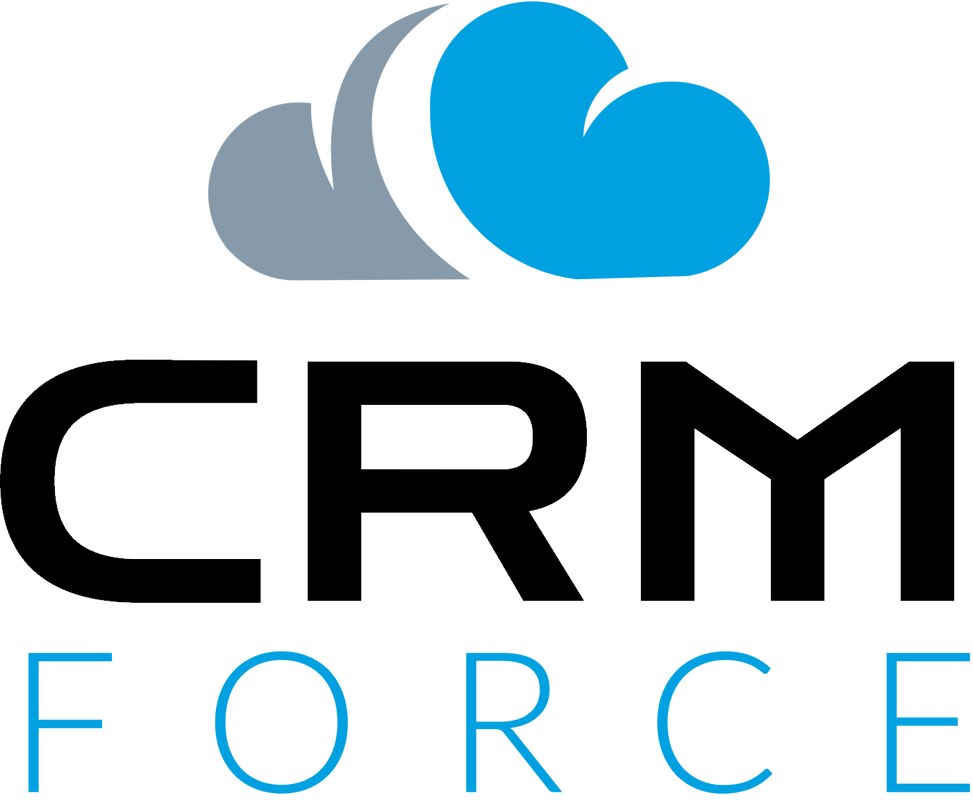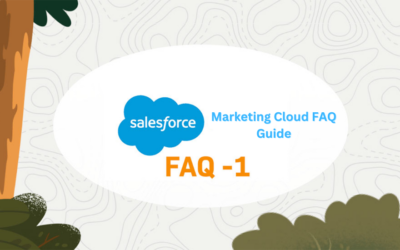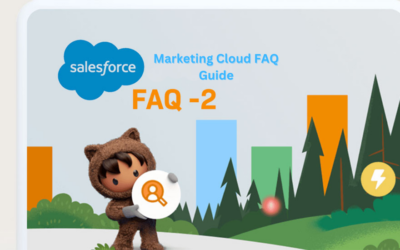In today’s dynamic and fiercely competitive business landscape, generating leads is just the tip of the iceberg. Success hinges on your ability to not only capture those leads but also to discern which among them holds the greatest potential for conversion into loyal customers. Salesforce Marketing Cloud, a robust platform in its own right, steps into a league of its own when you introduce the catalytic force of AI-powered lead scoring. In this comprehensive guide, we embark on a journey into the realm of AI-driven lead scoring. We’ll navigate the intricacies of this game-changing technique, fathom its critical significance, and unravel the intricacies of its seamless integration within the Salesforce Marketing Cloud ecosystem.
But before we dive headlong into the world of AI-powered lead scoring, it’s paramount to grasp the fundamental concepts that underpin this transformative approach. Chapter 1 unearths the bedrock by elucidating the very essence of lead scoring. We decipher the mechanics of evaluating and ranking leads based on a medley of criteria, be it their demographic attributes, engagement patterns, or behavioral intricacies. Beyond this foundation, we embark on a comparison between the traditional and AI-driven methods in Chapter 1.2. Traditional lead scoring, often manual and rule-based, takes center stage in many businesses, but it’s not without its limitations. On the flip side, AI-powered lead scoring harnesses cutting-edge algorithms to navigate a sea of data and provide more precise lead scoring. Buckle up as we explore the contrasts between these two approaches to lead evaluation, offering a sneak peek into the limitless potential that AI brings to the table in Salesforce Marketing Cloud. If you need assistance with Salesforce CRM setup and optimization, companies like CRM Force can provide valuable expertise and support.
1- Understanding Lead Scoring
1.1 What is Lead Scoring?
Lead scoring is the process of evaluating and ranking leads based on various criteria. These criteria can include demographic information, lead behavior, and engagement with your brand. Understanding lead scoring is the first step toward improving your sales and marketing strategies.
1.2 Traditional vs. AI-Powered Lead Scoring
This section delves into the fundamental differences between traditional and AI-powered lead scoring. Traditional lead scoring often relies on manual, rule-based methods that may introduce subjectivity and limitations. AI-powered lead scoring, on the other hand, harnesses advanced algorithms to analyze vast amounts of data for more accurate predictions.
2- The Power of AI in Lead Scoring
2.1 The Role of AI in Modern Business
This section explores AI’s fundamental role in modern business. It elucidates how AI can process and analyze data at unprecedented speeds and uncover hidden patterns and trends that humans might overlook. This understanding is vital for grasping the significance of AI in lead scoring.
2.2 How AI Enhances Lead Scoring
Delve deeper into how AI enhances lead scoring. Learn how AI can process data in real time, continuously adapt lead scores based on changing behaviors and trends, and incorporate a wider range of data sources, including social media activity, email interactions, and website visits.
2.3 Machine Learning and Predictive Analytics
This part of the chapter provides an in-depth explanation of machine learning and predictive analytics, the cornerstones of AI-powered lead scoring. Gain a comprehensive understanding of how AI uses historical data to make predictions about lead behavior and why this is pivotal in lead scoring.
3- Benefits of AI-Powered Lead Scoring
3.1 Enhanced Lead Prioritization
This section thoroughly explores the advantages of enhanced lead prioritization through AI. It discusses how AI can identify high-potential leads with remarkable accuracy, allowing your sales team to focus their efforts on the most promising opportunities, ultimately leading to improved conversion rates.
3.2 Improved Conversion Rates
Learn how AI-powered lead scoring facilitates improved conversion rates by allowing marketing and sales teams to personalize their messaging and strategies for individual leads. Understand why this personalization is critical for boosting conversion rates.
3.3 Reduced Sales Cycle
Discover how focusing on high-scoring leads can significantly reduce the sales cycle, making it more efficient. This section explains the direct impact of efficient lead scoring on your business’s overall success.
3.4 Increased Revenue
In this part of the chapter, delve into how AI-powered lead scoring helps maximize your resources and investments by focusing efforts on high-scoring leads, ultimately leading to increased revenue and a more profitable business.
4- Implementing AI-Powered Lead Scoring in Salesforce Marketing Cloud
4.1 Data Collection and Integration
Understand the critical importance of data collection and integration as the foundation of AI-powered lead scoring. This chapter delves into the types of data to collect, such as lead interactions, demographics, and behavior and provides insights into effectively integrating this data into Salesforce Marketing Cloud.
4.2 Choosing the Right AI Tools
Explore the available AI tools offered by Salesforce, such as Einstein, and understand their features. This section helps you make an informed decision about selecting the right AI tool for your business’s lead-scoring needs.
4.3 Data Analysis and Training
Get an in-depth understanding of the essential step of training AI models. This involves feeding historical data into the AI algorithms to help them understand patterns and correlations. This chapter explains how to prepare your data and train your AI models effectively.
4.4 Integration and Automation
This section guides you through the technical aspects of integrating AI into Salesforce Marketing Cloud. Learn how to use APIs and connectors to seamlessly automate the lead scoring process, ensuring it operates smoothly.
5- Best Practices for Successful AI-Powered Lead Scoring
5.1 Regularly Update and Refine Your Models
Gain insights into the importance of regularly updating and refining your lead scoring models to keep them aligned with your evolving business needs. This is essential for maintaining the long-term success of your lead-scoring strategy.
5.2 Collaboration Between Sales and Marketing
Explore the necessity of close collaboration between your sales and marketing teams in implementing a successful AI-powered lead-scoring strategy. Understand how to ensure alignment on lead definitions and how to fine-tune lead scoring criteria through collaboration.
5.3 Continuous Monitoring
Learn about the significance of continuously monitoring the performance of your lead-scoring models. Discover how to make adjustments as needed to maintain accuracy and effectiveness.
5.4 Train Your Teams
This section outlines strategies for training your sales and marketing teams to be proficient in using AI-powered lead scoring. Understand why training is vital for maximizing the benefits of this technology.
6- Challenges and How to Overcome Them
6.1 Data Quality
Understand the common challenge of data quality in lead scoring and learn about strategies for regularly cleaning and maintaining your data to ensure its accuracy.
6.2 Model Overfitting
Get a comprehensive explanation of model overfitting and the risks associated with it during AI model training. Learn how to avoid overfitting by regularly retraining your models with fresh data.
6.3 Privacy and Compliance
This section discusses the potential privacy and compliance concerns that may arise with AI-powered lead scoring. Understand how to ensure your lead scoring process aligns with data protection regulations and best practices to mitigate these concerns.
7- Real-World Success Stories
7.1 Company X
Delve into Company X’s experience in implementing AI-powered lead scoring and the remarkable 30% boost in conversion rates achieved within just three months. This section provides a detailed case study of their strategy and results.
7.2 Company Y
Explore the success story of Company Y, focusing on the 25% reduction in their sales cycle after adopting AI-powered lead scoring. Gain insights into the specific strategies and outcomes of their implementation.
8- The Future of AI in Salesforce Marketing Cloud
In Chapter 8, we take a forward-looking perspective to explore the evolving landscape of AI within the Salesforce Marketing Cloud. Here’s a more detailed breakdown of the content:
8.1 Advancements in Machine Learning
This section discusses the potential advancements in machine learning that are on the horizon for Salesforce Marketing Cloud. It explores how machine learning algorithms can become more sophisticated, allowing for even more accurate lead scoring and predictive analytics.
8.2 Data Analysis and Interpretation
We delve into how data analysis tools within Salesforce Marketing Cloud may become more intuitive and user-friendly. This means that businesses will be able to derive deeper insights from their data without needing extensive technical expertise.
8.3 Integration into Other Marketing and Sales Aspects
This section explores how AI can be seamlessly integrated into various aspects of marketing and sales within the Salesforce Marketing Cloud. This could include AI-driven chatbots for customer support, automated email marketing campaigns, and more.
8.4 Personalization at Scale
With the advancement of AI, personalization can become even more granular and efficient. The chapter explains how AI will enable businesses to deliver highly personalized content and offers to their leads and customers, improving engagement and conversions.
8.5 Predictive Analytics Beyond Lead Scoring
We discuss how predictive analytics will extend beyond lead scoring to predict customer behavior, churn rates, and market trends. This evolution will enable businesses to make data-driven decisions with greater confidence.
9- Transform Your Business with Salesforce Marketing Cloud
Chapter 9 serves as the conclusion of our guide, summarizing the key takeaways and emphasizing the transformational potential of AI-powered lead scoring with Salesforce Marketing Cloud. Here’s a more detailed insight into what this chapter includes:
9.1 Recap of Key Points
We revisit the essential points discussed throughout the guide, summarizing the importance of AI-powered lead scoring, its benefits, best practices, challenges, and real-world success stories.
9.2 Call to Action
The conclusion urges businesses to take action. It emphasizes that AI-powered lead scoring is not a theoretical concept but a practical and achievable strategy that can transform their sales and marketing efforts.
9.3 Getting Started with Salesforce Marketing Cloud
For those ready to take the next step, we provide guidance on how to get started with Salesforce Marketing Cloud. This may include links to resources, user guides, or recommended steps for implementation.
9.4 The Path to Success
We offer insights into the steps businesses can take to ensure success with AI-powered lead scoring in Salesforce Marketing Cloud. This includes the importance of continuous learning and adaptation.
9.5 Final Encouragement
The conclusion leaves readers with a final word of encouragement, underlining that businesses that embrace AI-powered lead scoring have the potential to stay ahead of their competition, enhance customer relationships, and drive growth.
In essence, Chapter 8 looks ahead to the future of AI in Salesforce Marketing Cloud, while Chapter 9 wraps up the guide by summarizing key points and encouraging businesses to embark on their journey of transformation through AI-powered lead scoring.
Conclusion
In conclusion, the profound impact of AI-powered lead scoring within the realm of Salesforce Marketing Cloud cannot be overstated. This journey has been an exploration of the strategic imperative that AI represents in the world of modern marketing and sales. The benefits are vast and multifaceted. From the fine-tuned lead prioritization that enables your sales teams to focus their efforts on the most promising opportunities, to the significantly improved conversion rates brought about by personalized strategies, AI-powered lead scoring is a game-changer. Moreover, it streamlines the sales cycle, ensuring that valuable resources are utilized efficiently. The net result is increased revenue and a more profitable business.
Looking to the horizon, as discussed in Chapter 8, the future of AI within Salesforce Marketing Cloud holds tremendous promise. Advancements in machine learning, more intuitive data analysis, broader integration, and personalized offerings at scale are on the horizon. These developments will empower businesses to not only stay ahead of the curve but also set the pace in their respective industries. As we conclude this guide, it’s essential to recognize that the power of AI isn’t in its complexity, but in its ability to simplify and amplify the effectiveness of your sales and marketing efforts. The canvas of Salesforce Marketing Cloud is ready for your vision, where success is not a destination but a continuously evolving journey, driven by the limitless potential of AI. In essence, AI-powered lead scoring is the catalyst that propels businesses into a future where success knows no bounds, and Salesforce Marketing Cloud is the vehicle that gets you there. To learn more about how CRM Force can assist you in recruiting top CRM talent and optimizing your CRM strategies for successful drip campaigns, contact us today. Together, let’s maximize your customer engagement Contact Us today.





